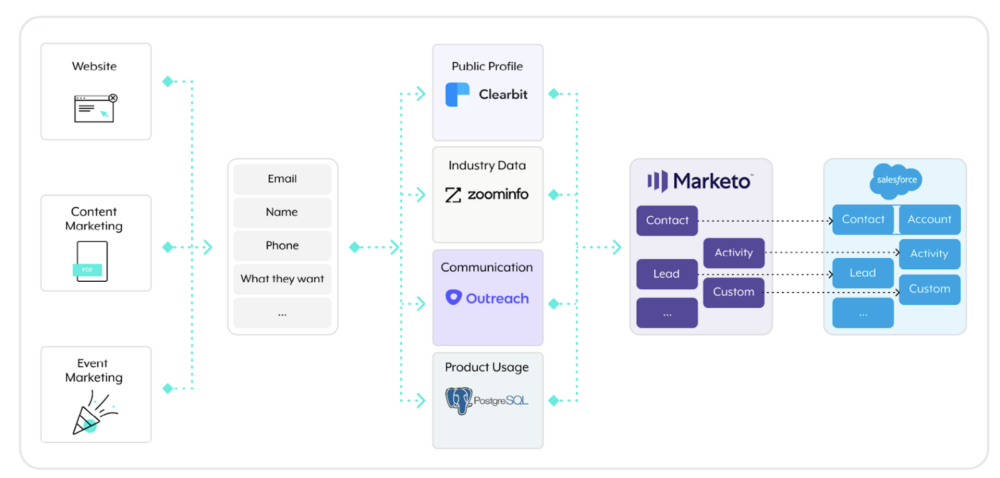Automation has long been tied to robotic process automation (RPA) software.
While the technology can help businesses run more efficiently, treating it as the solution for driving digital transformation fails to account for the broader possibilities offered by automation—particularly those provided by an enterprise automation platform.
To better understand the differences between the two sets of technology, and why enterprise automation can drive more meaningful returns to your business, let’s compare them across a few dimensions.

Want to learn more?
These insights come from our guide, “Expanding automation beyond the limits of RPA.”
Tasks versus business processes
You perform countless tasks throughout your work day, whether that’s logging into an application to find information, copying and pasting data between systems, or messaging a colleague for an update on an assignment.

Performing these error-prone tasks is generally tedious and mind-numbing, leaving your team grateful when RPA’s robots perform them instead.
Streamlining individual tasks, however, comes with limitations, as workflows are left unchanged and the automations deliver minimal business value.
Business processes, on the other hand, are what drive your organization. Each works across employees and business applications, and, if automated end-to-end, can carry transformative benefits for all involved.
For instance, using an enterprise automation platform, you can streamline your lead routing process all the way through; in doing so, your sales reps can follow-up with leads more intelligently and faster, thereby increasing their odds of converting them. All the while, your prospects receive a better experience, as they get a timely response catered to their needs and wants.
Here’s how it can work:

1. Once a lead comes in via a marketing channel, the workflow gets triggered.
2. The enterprise automation platform uses 3rd-party data enrichment tools to look up any information that’s missing on the lead. At the same time, the platform looks up any communications they’ve received and, if relevant, their product usage data.
3. The enterprise automation platform goes on to update the lead with all this information in your marketing automation platform and in your CRM, allowing your marketers and reps to become aware of the lead and follow up intelligently.
Related: How to decide between an iPaaS and RPA software
Key performance indicators
As mentioned already, workflow automations powered by an enterprise automation platform aim to tackle business outcomes that outweigh those targeted by RPA software.
Task automations tend to focus on metrics like time or accuracy savings. And while these metrics are useful, enterprise automation can help different departments deliver on their top priorities:
HR
- Provide new hires with the applications and equipment they need at the start of their first day by using an automated onboarding process
- Increase the quantity and quality of job candidates for a given job req by streamlining the referral submissions workflow
- Minimize security incidents from departing or former employees by automating offboarding
Sales/Marketing
- Enrich each lead in near-real time through an automated lead enrichment process
- Enable reps to respond to leads within a few minutes by implementing an automated lead routing workflow
- Improve upsell and cross-sell conversions by leveraging product usage signals to drive automations
Finance
- Manage customer orders with nearly zero human intervention by streamlining order processing
- Fulfill device and equipment orders from employees within a certain amount of time using an automated procurement workflow
- Collect invoice payments x number of hours faster by instantly notifying the appropriate colleagues as soon as any becomes overdue
Related: The strengths and weaknesses of RPA and workflow automation
Scalability
As your organization’s app ecosystem evolves, and as the apps themselves change, you’ll need an automation solution that can adapt.
Unfortunately, RPA fails to offer this type of resilience as any app replacements or modifications to UIs can cause the bots to break. And while bots can be reconfigured and new ones can get added, the time and resourcing this requires comes at a high cost to your team.
An enterprise automation platform, on the other hand, uses APIs as the foundation for connectivity. The result: Any changes to the apps’ UIs shouldn’t affect the connections and workflow automations built in the platform; moreover, replacing applications for a given automation can be fairly straightforward and take just a few minutes.
